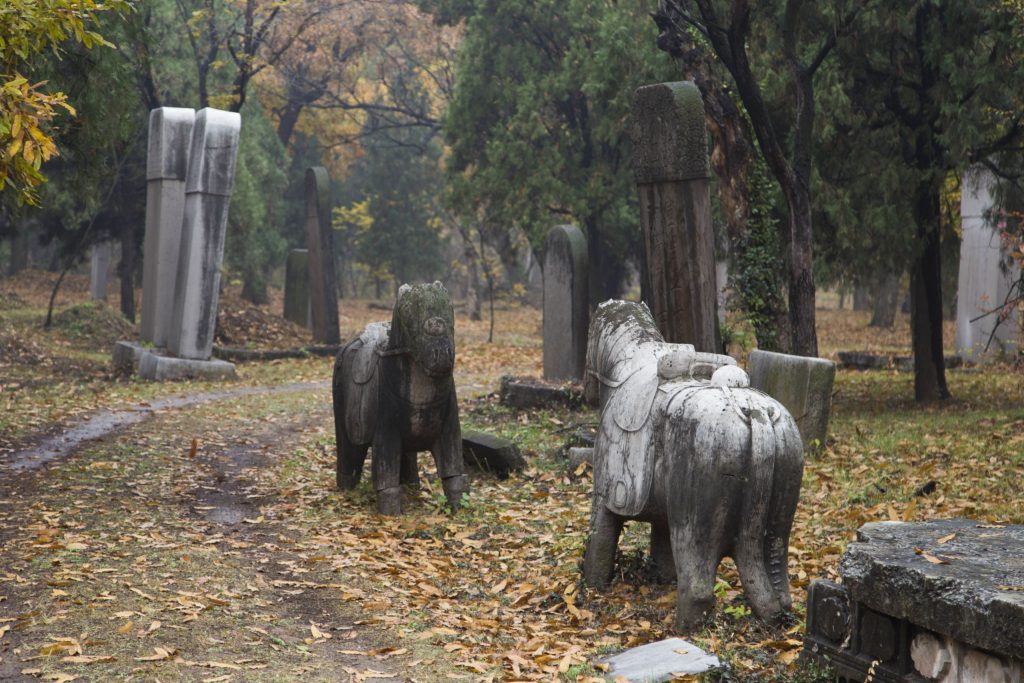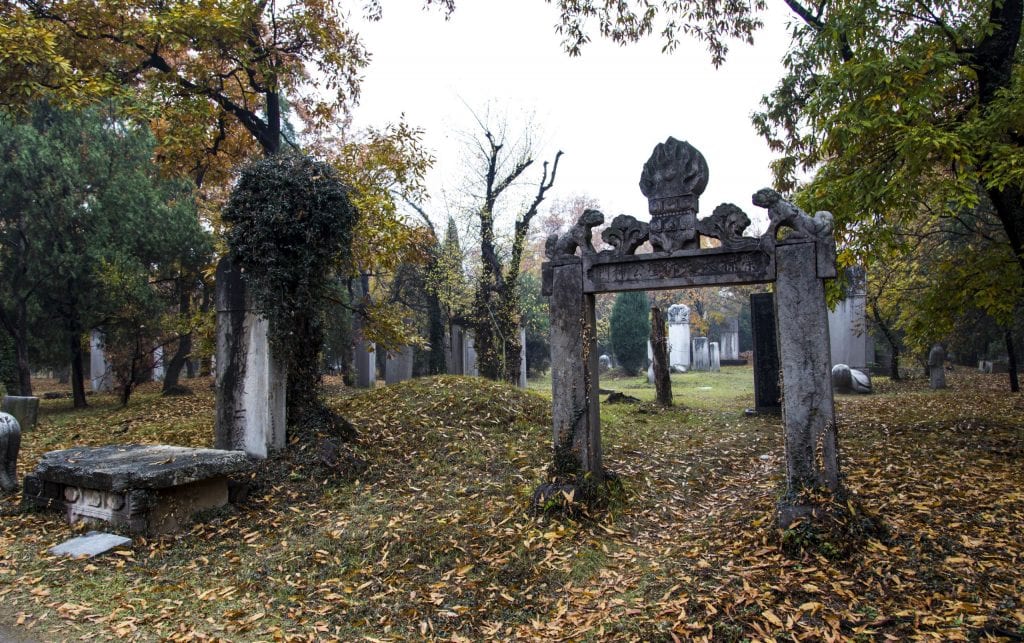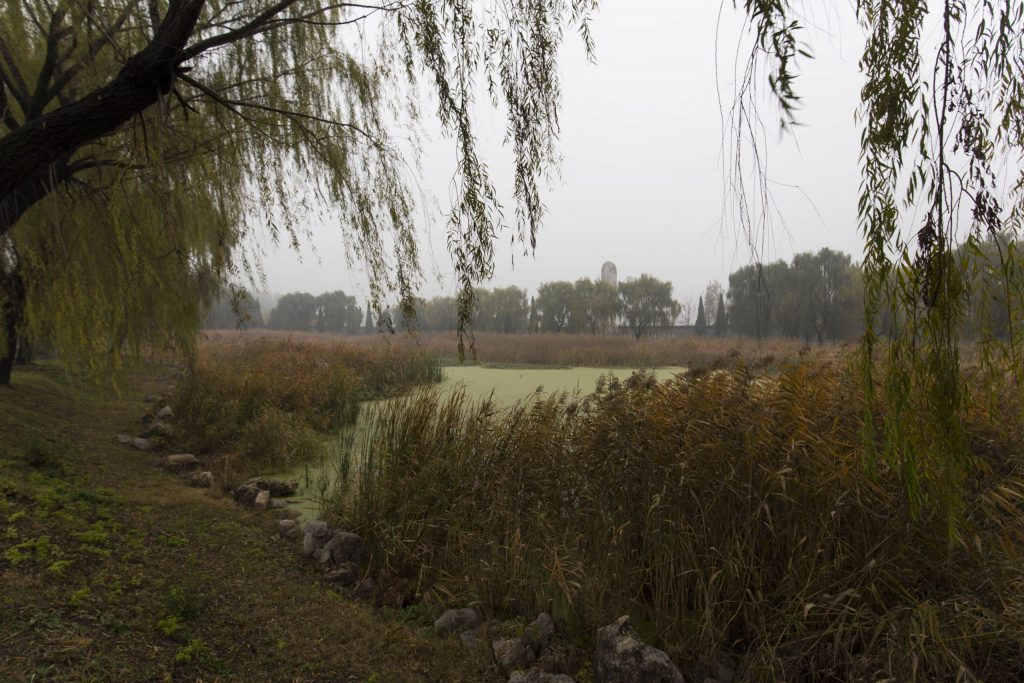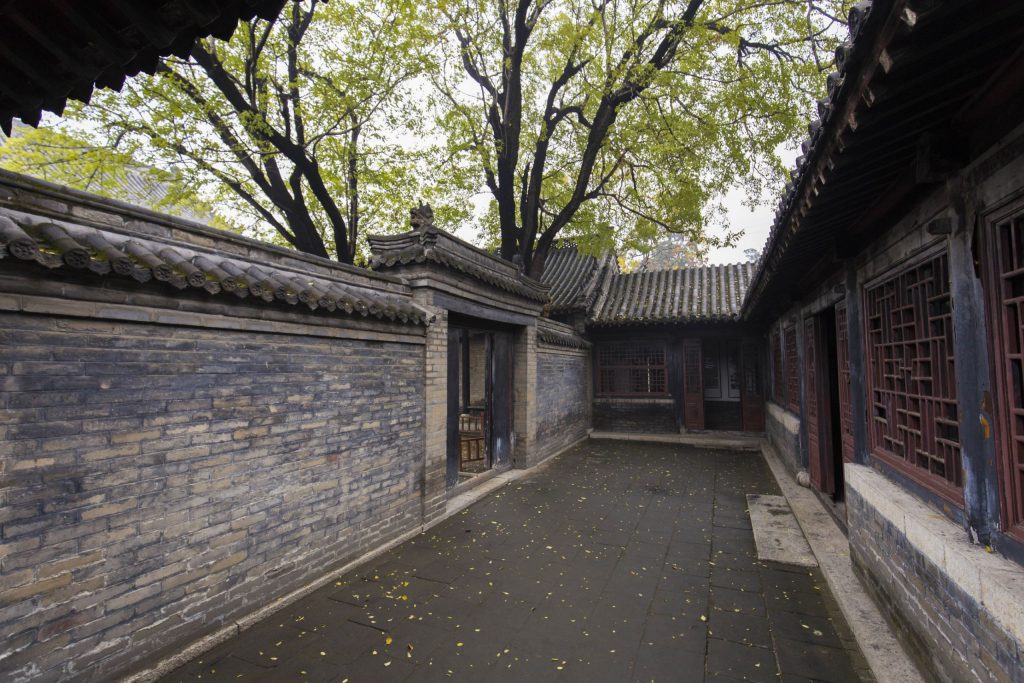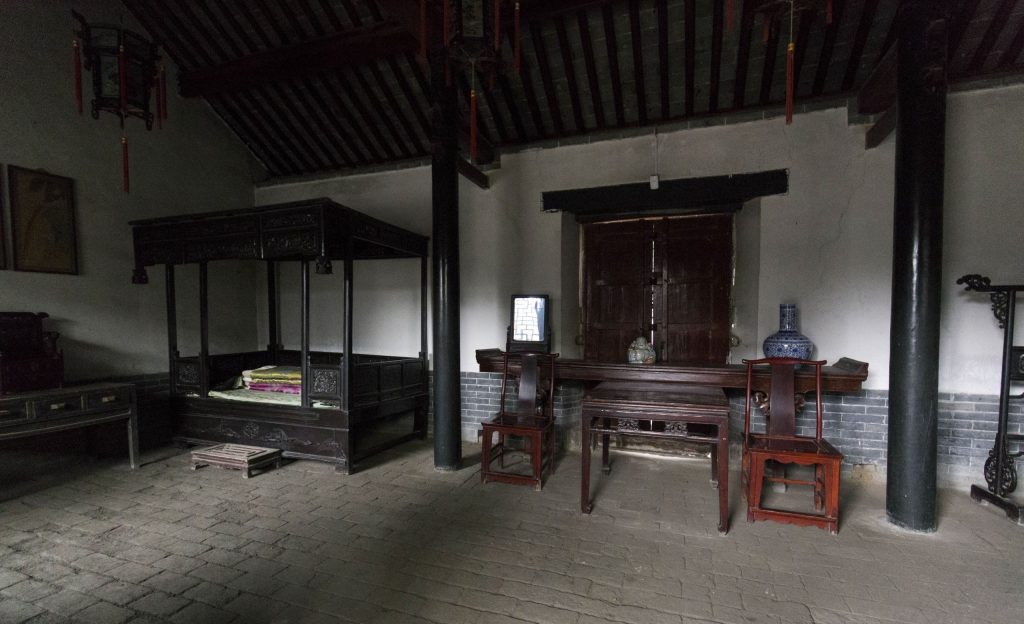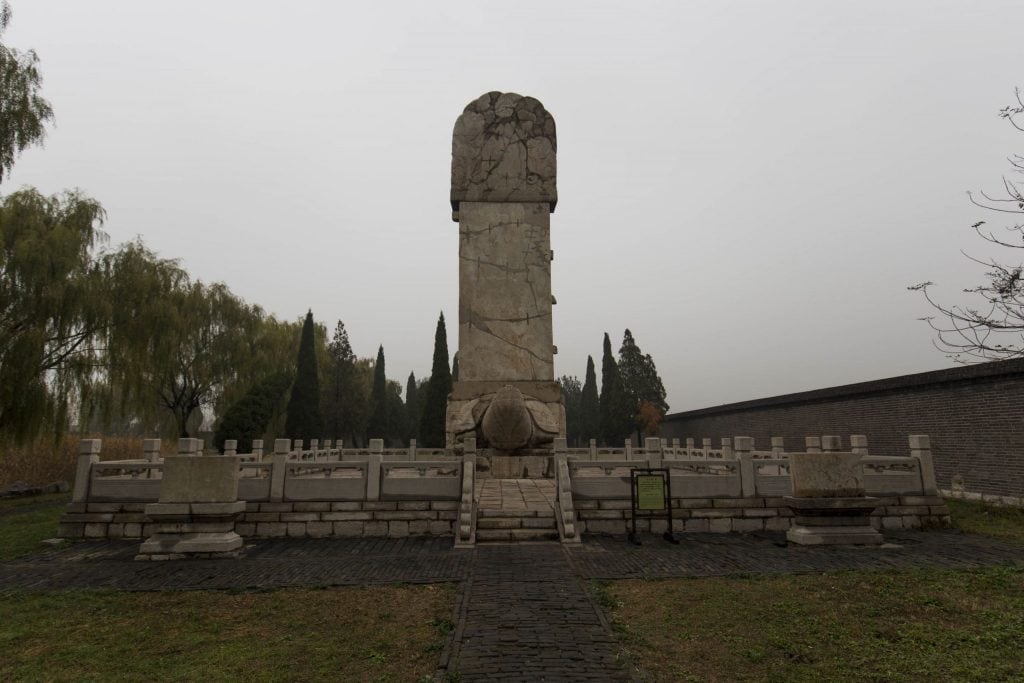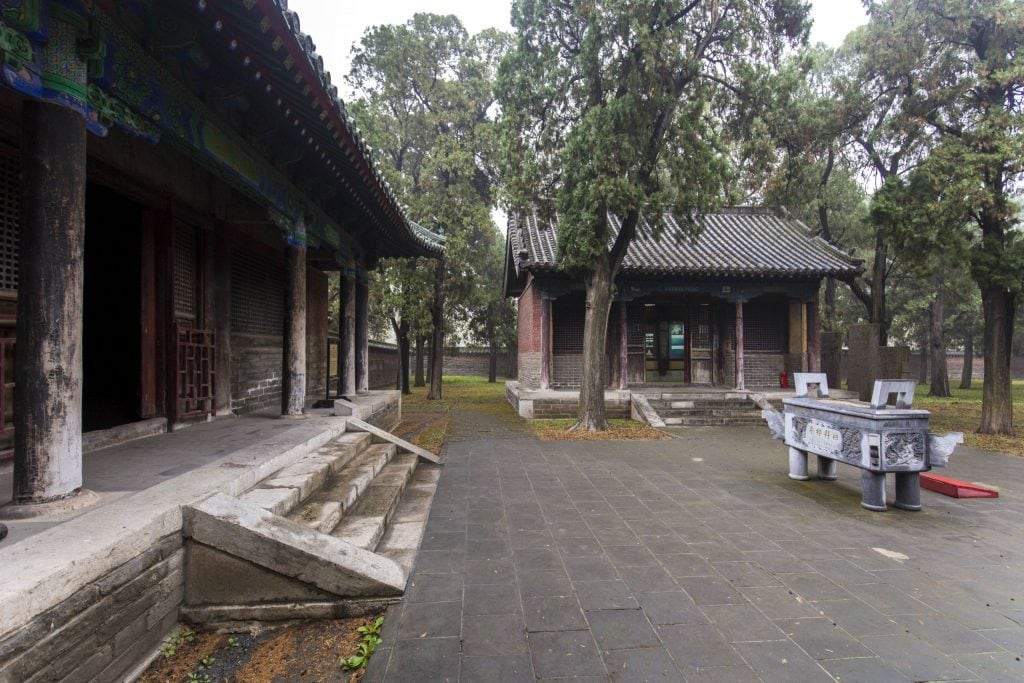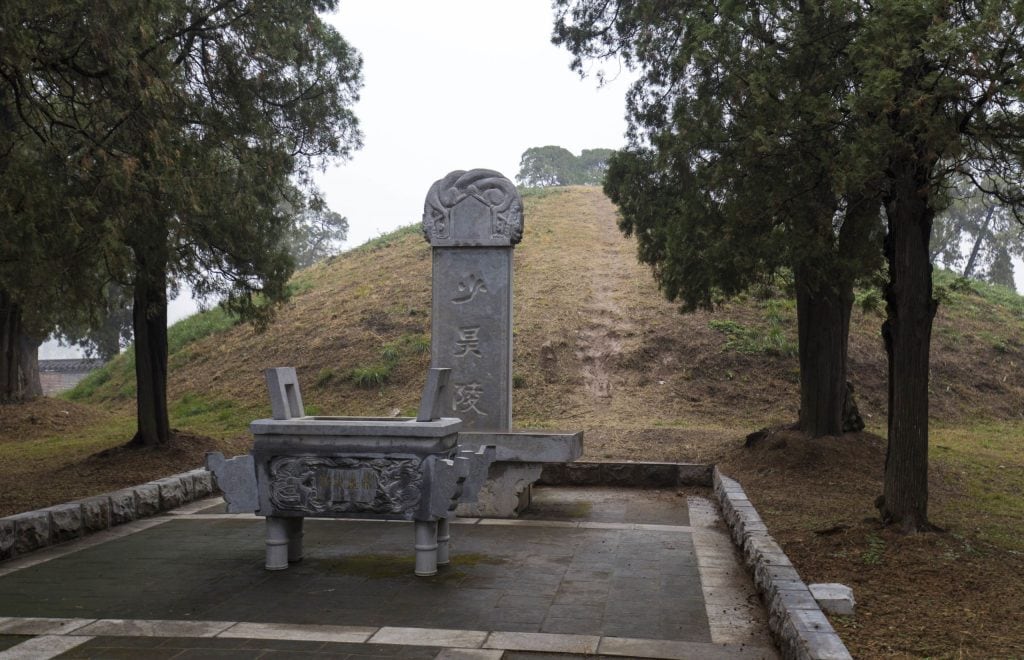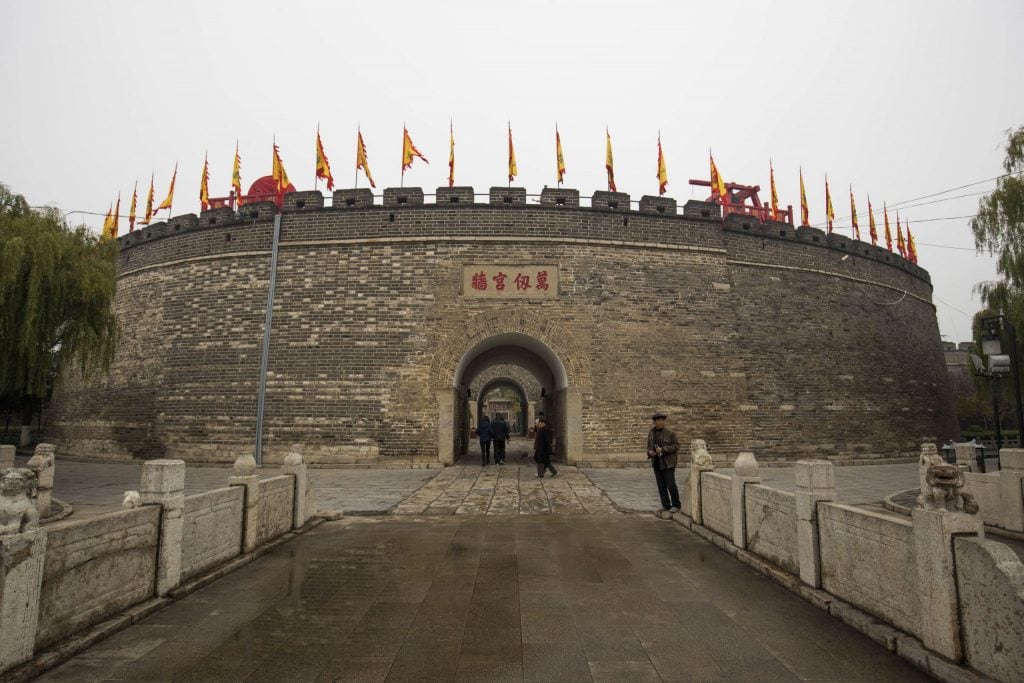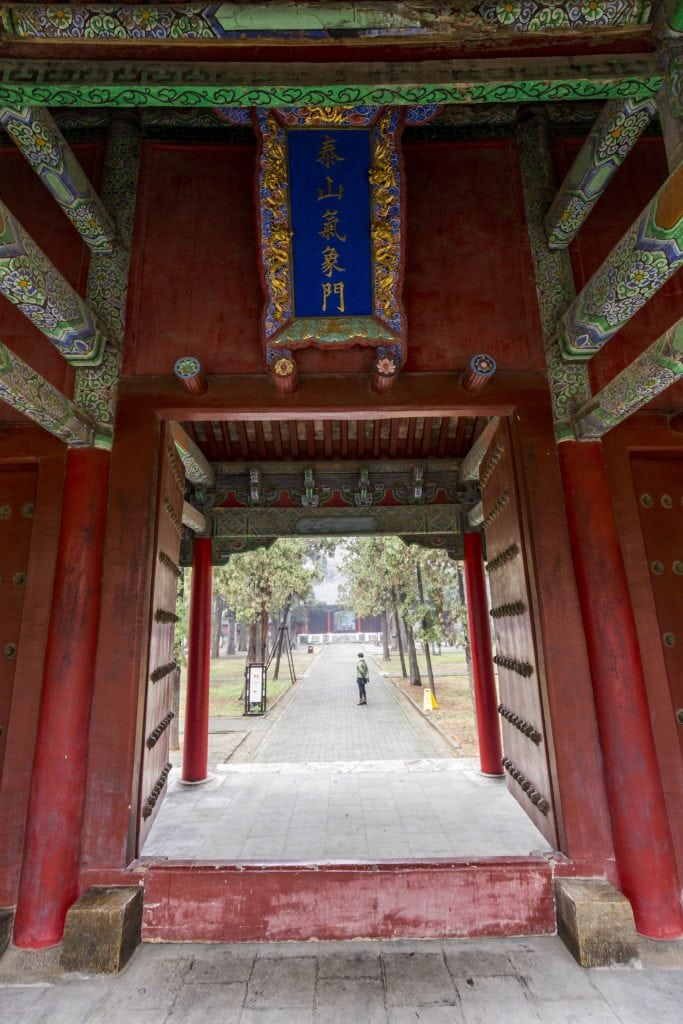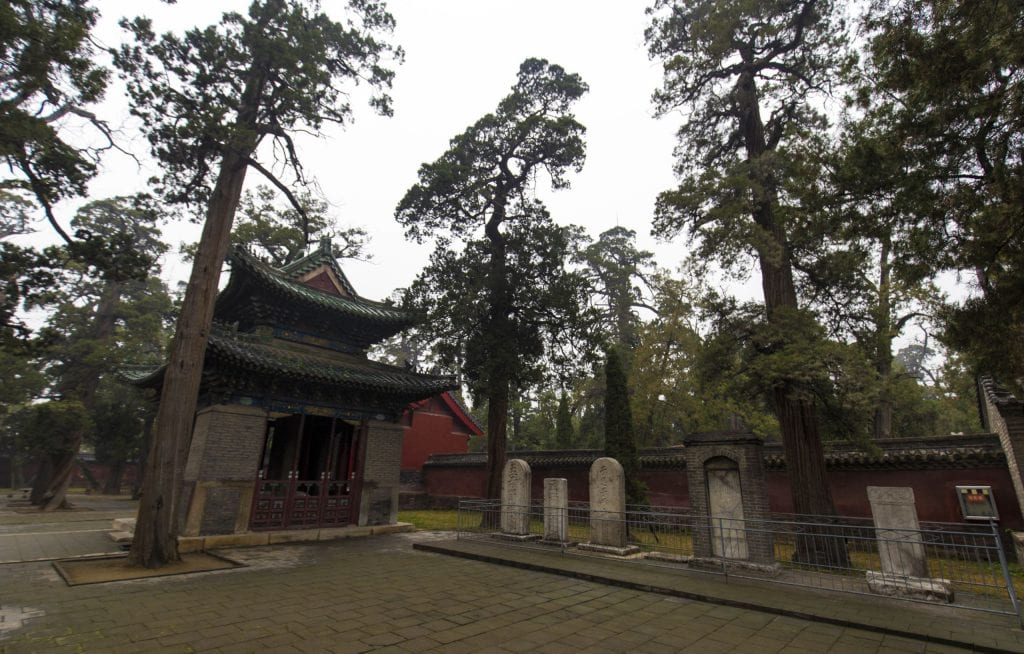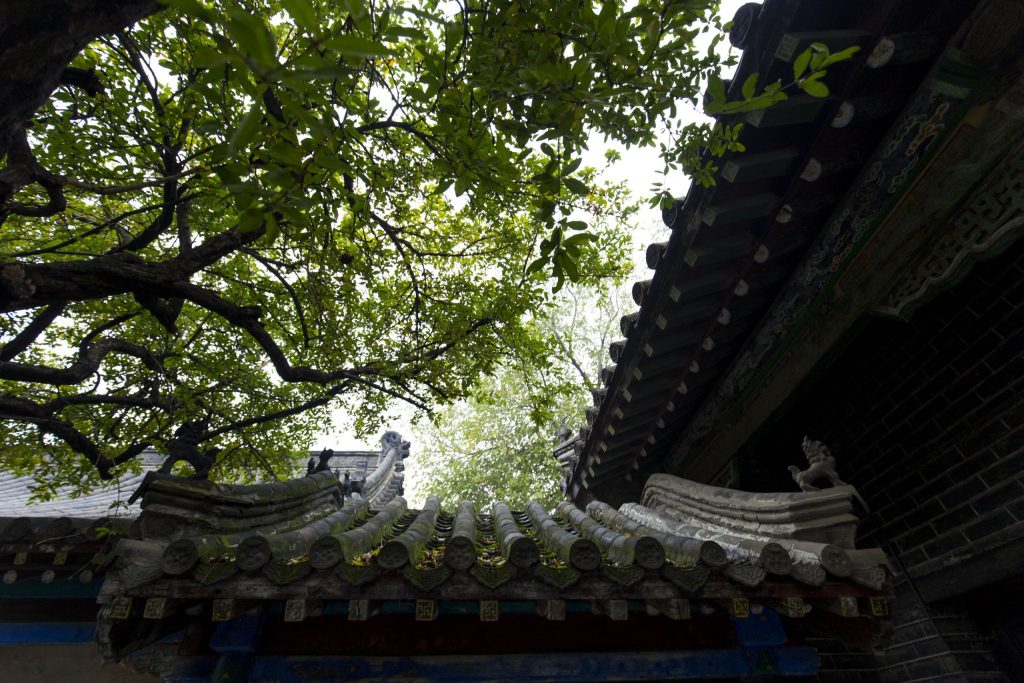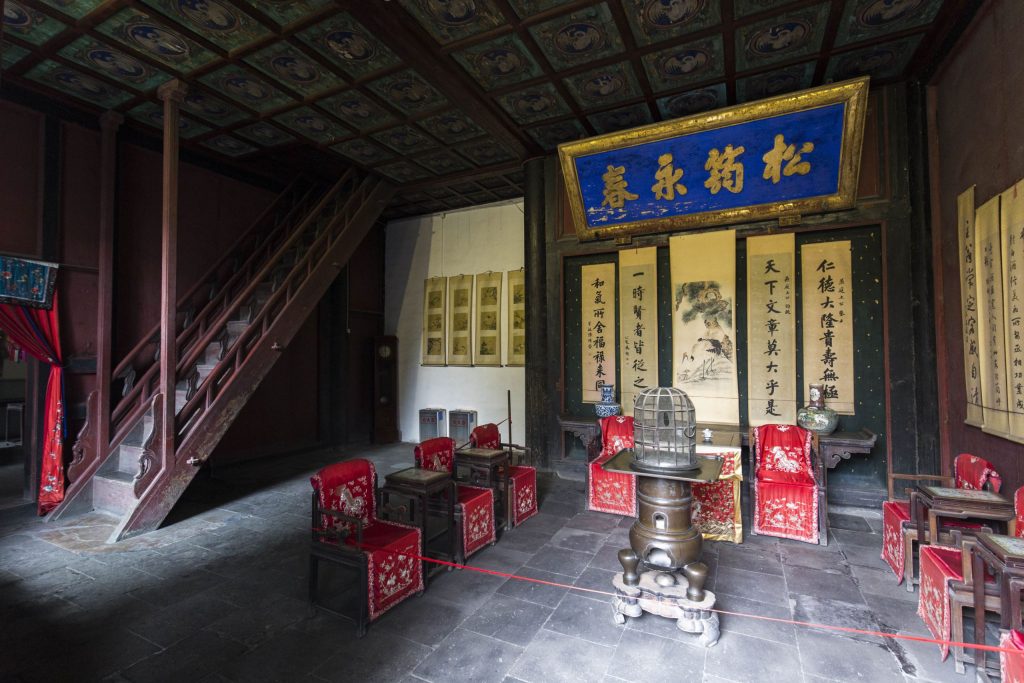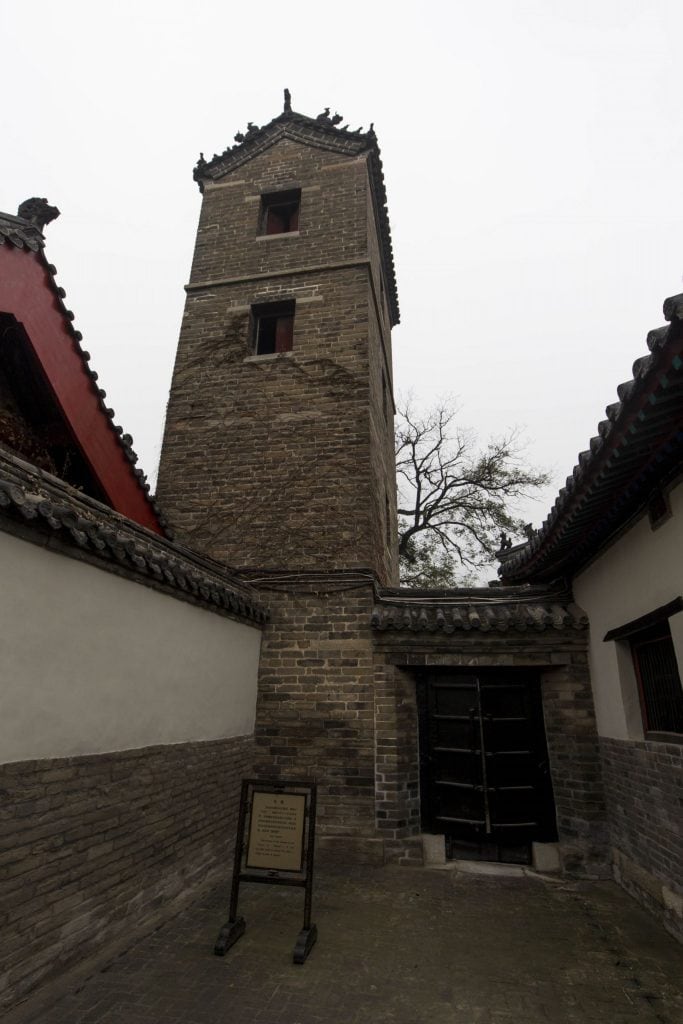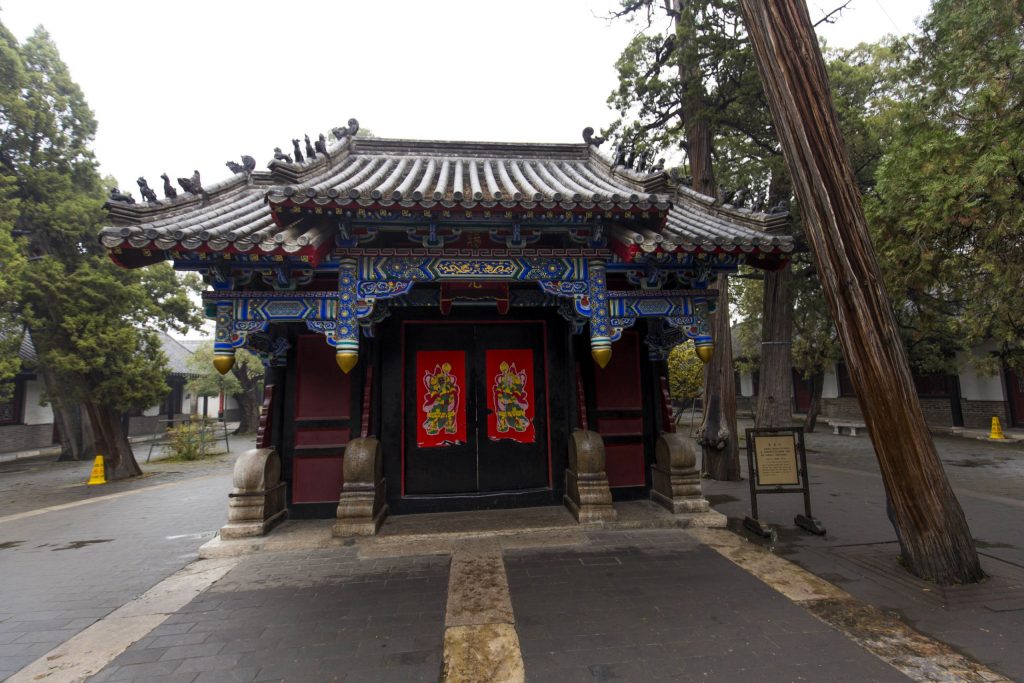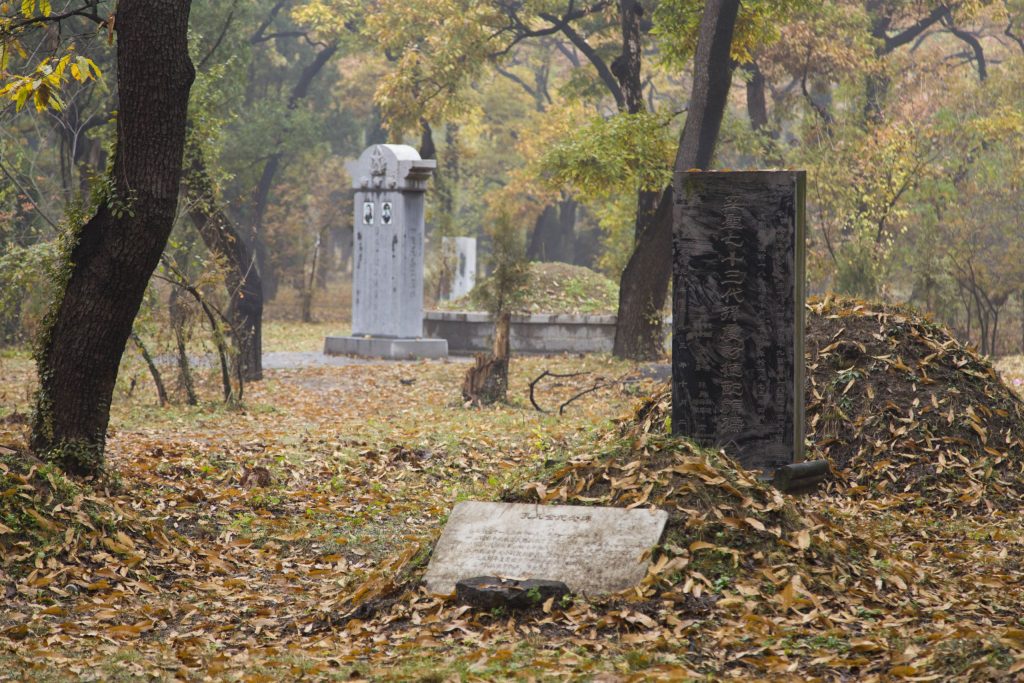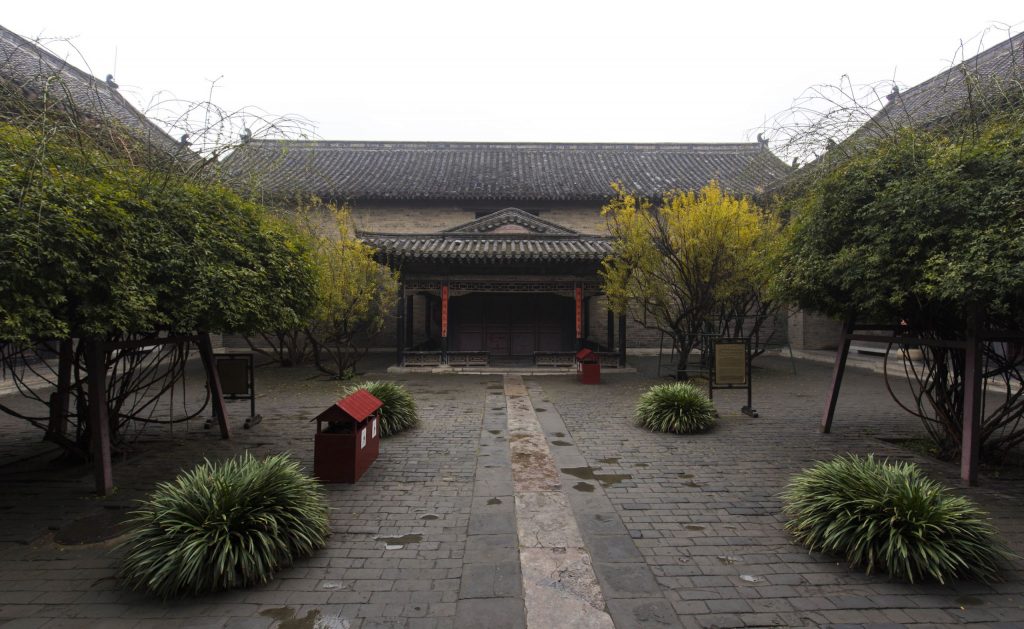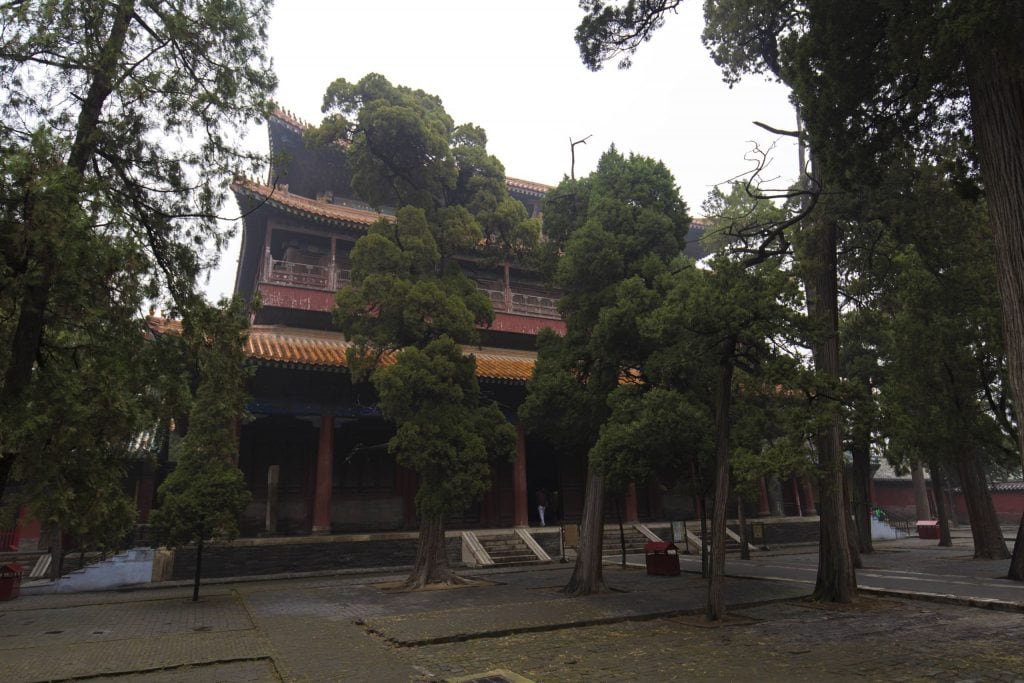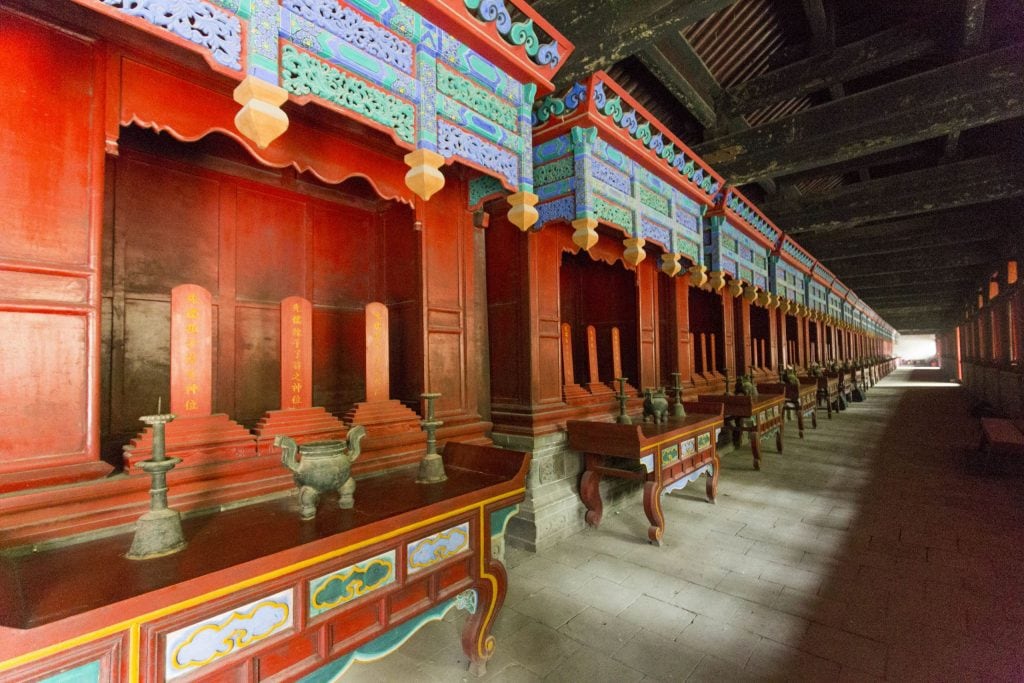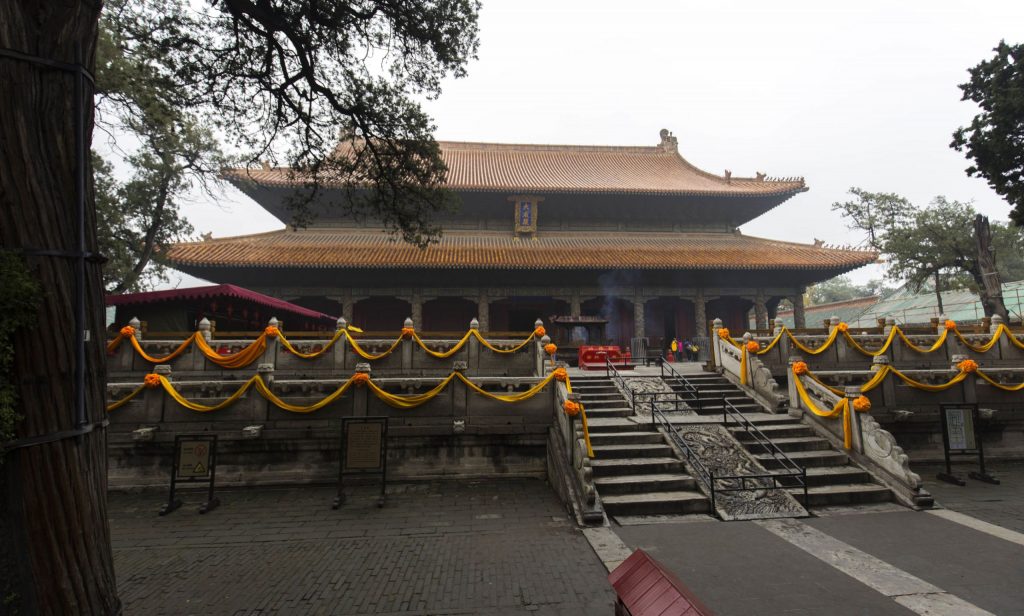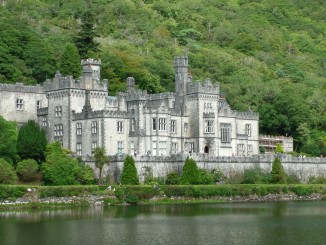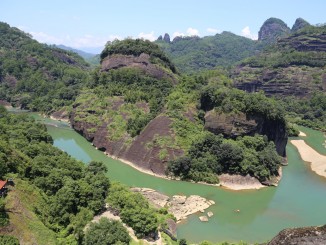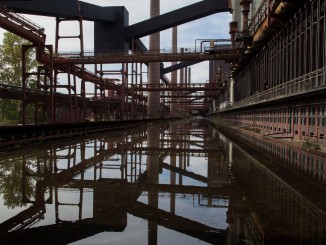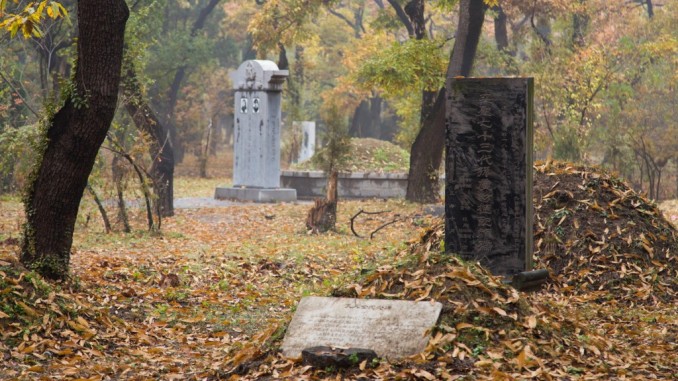
Table of Contents
Qufu is the birthplace of Confucius and a UNESCO World Heritage Site. My quest to see all these sites brought me to Qufu during my last trip to China. Qufu is a place which is a bit off the beaten track in China. It’s best reached from either Jinan or Xuzhou as a day trip. I also took the opportunity to visit the Mencius temple nearby and the tomb of the Yellow Emperor. Join me on a journey through China’s history.
How to get to Qufu
Qufu is located between Jinan and Xuzhou on the Beijing-Shanghai high-speed railway. It can be reached from either city within an hour by high-speed train. I took the train from Xuzhou as a day trip. Once at the train station in Qufu I took a taxi towards the cemetery of Confucius which is one of the three places listed as the UNESCO World Heritage Site. From there I took a “taxi” to the historical town to see the Confucius temple and mansion. You can also walk this part in about 20-25 minutes but the drizzle had me pay 20 RMB to get there dry and save some time. If you are a diehard like me the Mencius temple and Yellow Emperors birthplace with the Shaohao tomb are a must to see too. For this I hired a local taxi to drive me there as this is a 45 minute drive. I paid about 150 RMB for the round trip and another 80 RMB so that he waited for me at the Shaohao tomb and drive me back to the train station after my visit. My exact route can be found in the GPS track at the bottom of this article.
TIP! Negotiate a fixed price for taxis in China to drive you a half or full day! It’s worth it and if you speak a bit Chinese in smaller towns 350 RMB is enough for a day.
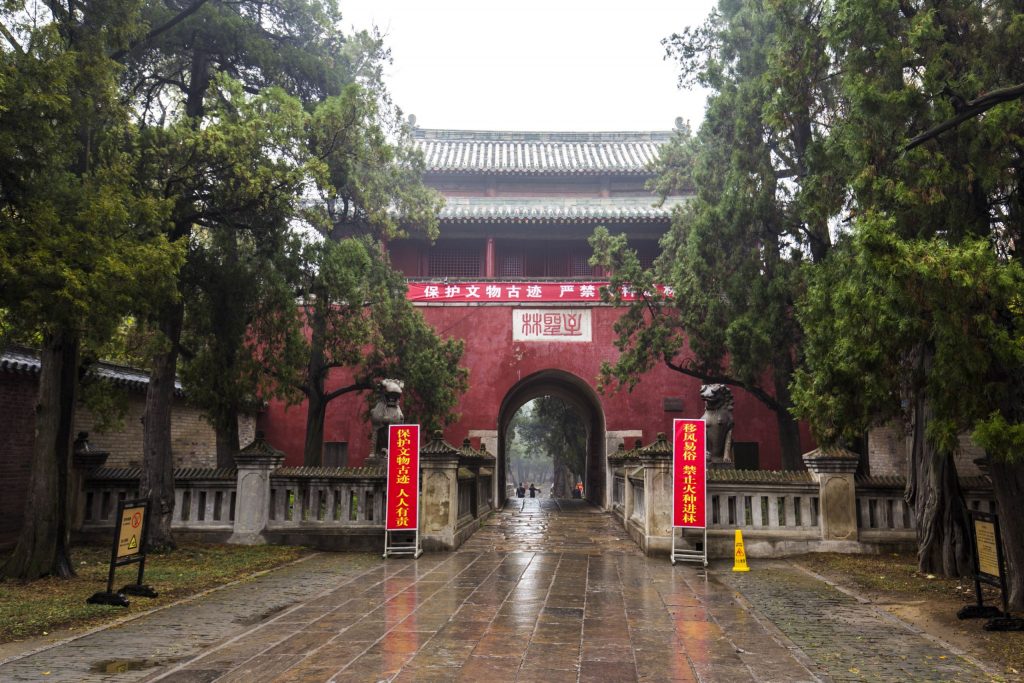
Who is Confucius?
Confucius, or Kong Qiu in Chinese, was a great philosopher and politician in China. He lived from 551-479 BC and published a huge amount of texts covering various aspects of society. His works include amongst others the five classical Chinese texts. The works cover the way of life, worshiping ancestors, Yin and Yang and living in harmony which are each key pillars in Chinese society. After the dead of Confucius his teachings were used to construct the Confucianism way of life. Confucianism, like Taoism but unlike Buddhism, is indigenous to China. These three beliefs plus some ancient beliefs are the foundations of Chinese thoughts and practices. Confucianism was the most prominent belief until Taoism and the Buddhist influence from India took over. Until the 10th century when in the Tang dynasty it got revived through neo-Confucianism, which was teached by Mencius. The neo-Confucianism beliefs still thrive today and even during the time of Mao it was not possible to put them fully aside.
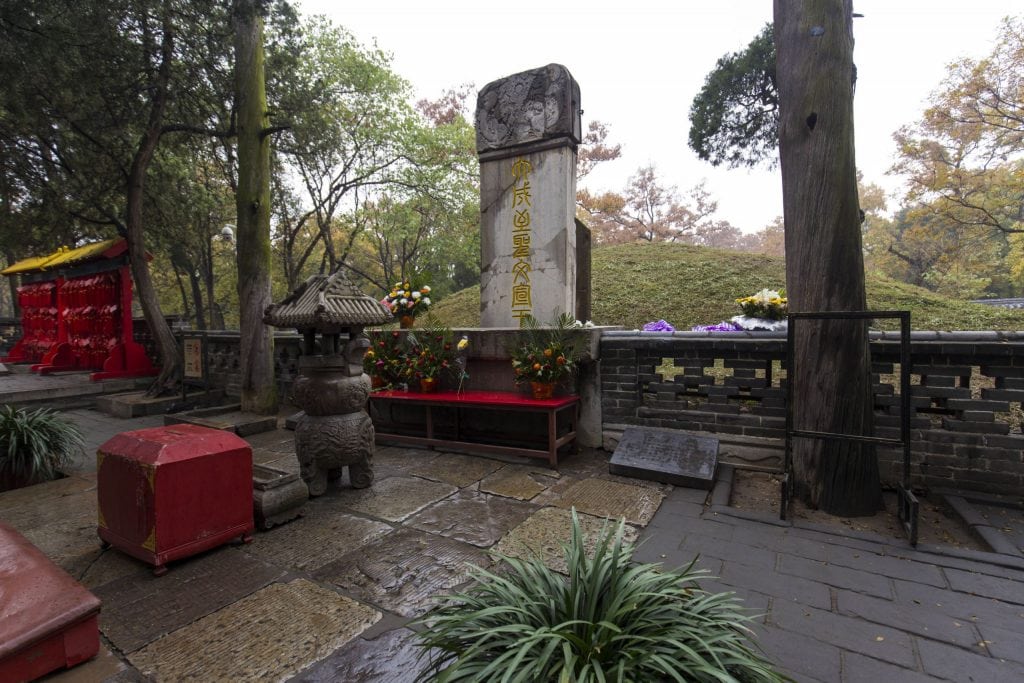
Confucius got buried at his birthplace and the tomb can be visited today at the Confucius cemetery. His descendants of today are still buried there today and the cemetery is expanded once in a while. The most important tomb is of course the one of Confucius himself but other important tombs, statues and steles of mainly the Ming dynasty can be found in the forest. It’s a peaceful and especially quiet area with beautiful colored leaves in autumn. The fresh air, which is rare in China, made it a nice morning walk. After exploring the cemetery I took an unofficial taxi to the Confucius Mansion to avoid the drizzle and win some time.
Kong Mansion and Confucius Temple
The Kong Mansion was built in a typical Chinese way with offices in the front and residential buildings in the back. The current remains are mainly from the Ming and Qing dynasty and cover a total of 152 buildings. The mansion was never used by Confucius himself. His house was at the place of the current temple but removed in later years. The mansion was used until 1937 when the last descendant of Confucius left. Today it is a UNESCO World Heritage Site and houses a museum and a large library of documents dating back hundreds of years. I entered through the great gate and through the great hall passed the second and third hall to end up in the residential area. If you walk through the mansion everything seems empty but do not get disappointed by closed doors and dirty windows. It’s common in China that you cannot enter most buildings and that you simply have to look through the window to get an impression of the inside. Unfortunately the windows at the Kong Mansion where pretty dirty, they should clean the windows more regularly to have a better view inside. I peaked in some of the residential buildings to see the way of life during the Ming dynasty and worked my way towards the garden in the back. The garden was a bit disappointing but this could be due to the fact that winter around the corner. I left through the back entrance and continued my way to the Confucius Temple.
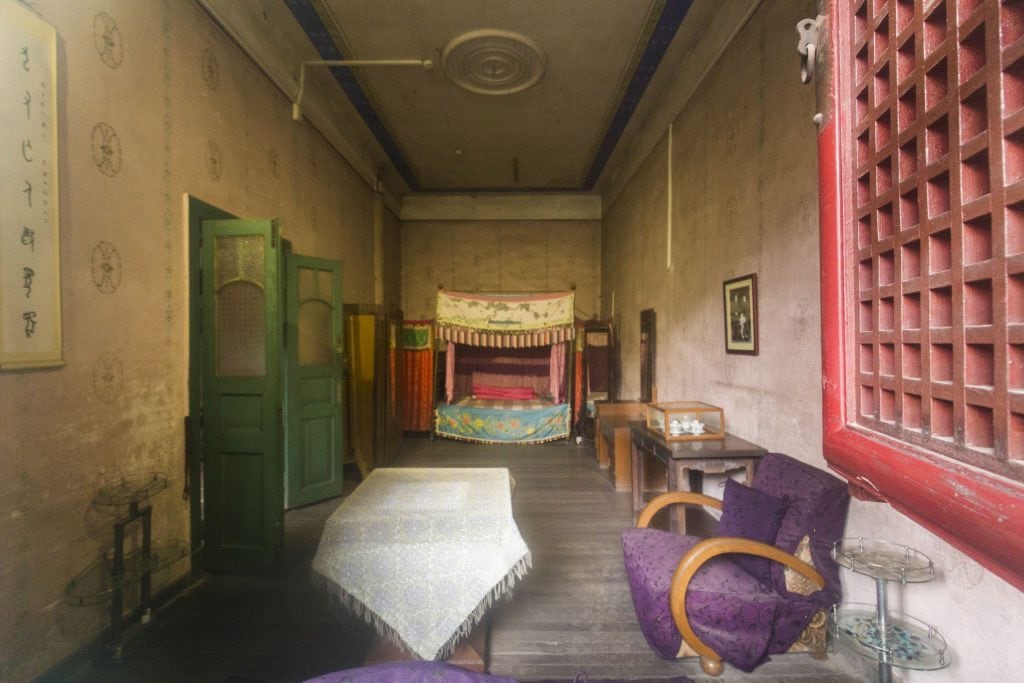
There are many temples dedicated to Confucius in China but the largest and most important one can be found in Qufu, the birthplace of Confucius. The temples’ size has not always been that large as it started with a single building just a year after Confucius his death. It took over two centuries before it became as large as it is today. When I entered the temple the first thing I noticed is that it’s built in the same way as the Forbidden City which I visited earlier during another trip in China. With over 1 kilometer in length the temple complex is one of the largest in whole China. It takes quite some time to explore the place. The first half is quite empty with some gates and many old trees. The second part contains many steles and some halls for worship and study. In the end you will find the main hall which is called the Hall of Great Perfection. It is beautiful decorated with sculptured pillars around it supporting the roof. The wooden structures inside are decorated with colorful paintings. I have seen many temples in China and can say that this one is for sure one of the more beautiful ones. After admiring the beauty I walked back to the front of the temple to catch a taxi. The third taxi agreed to my price and drove me the rest of the day to the places I wanted to visit. I continued to the Mencius Mansion and Temple in nearby Zoucheng first.
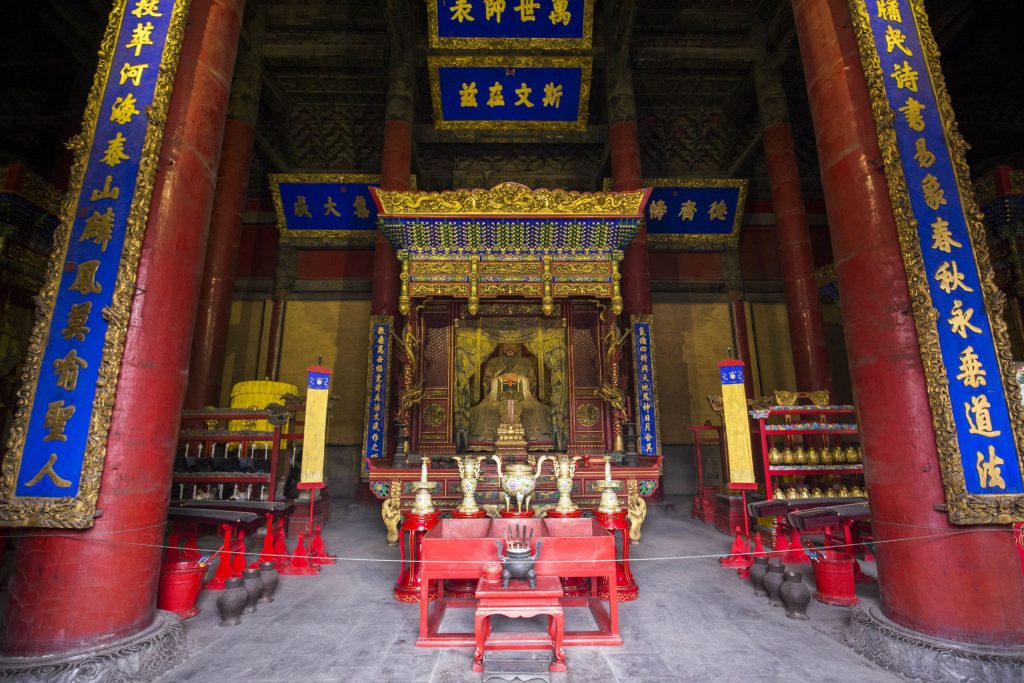
Mencius Mansion and Temple
Mencius lived about two centuries after Confucius and is the second most important person after Confucius himself in teaching Confucianism. His ideas however were a bit different and only came into practice during the neo-Confucianism time. Mencius concentrated more on the ideals of society and emphasized more the importance of rulers. His ideas however only were picked up by philosophers in the 10-11th century during the Tang dynasty when neo-Confucianism revived the old Confucianism. The Mencius Mansion and Temple are located next to each other just 45 kilometers south of Qufu. They are actually comparable with the Confucius Mansion and Temple but a bit smaller. During my visit the main temple hall and main mansion were under renovation. More as a quick walk over the ground I could not do. It was however worth it to go there for a diehard sightseeing guy like me. It took me an hour to see the place after which the taxi I chartered brought me to the Shaohao tomb in Qufu.
TIP! The Mencius Temple and Mansion are the least interesting for the average tourist. You could ship these so that you can stay around Qufu to have more time and possible visit the Muslim quarter there.
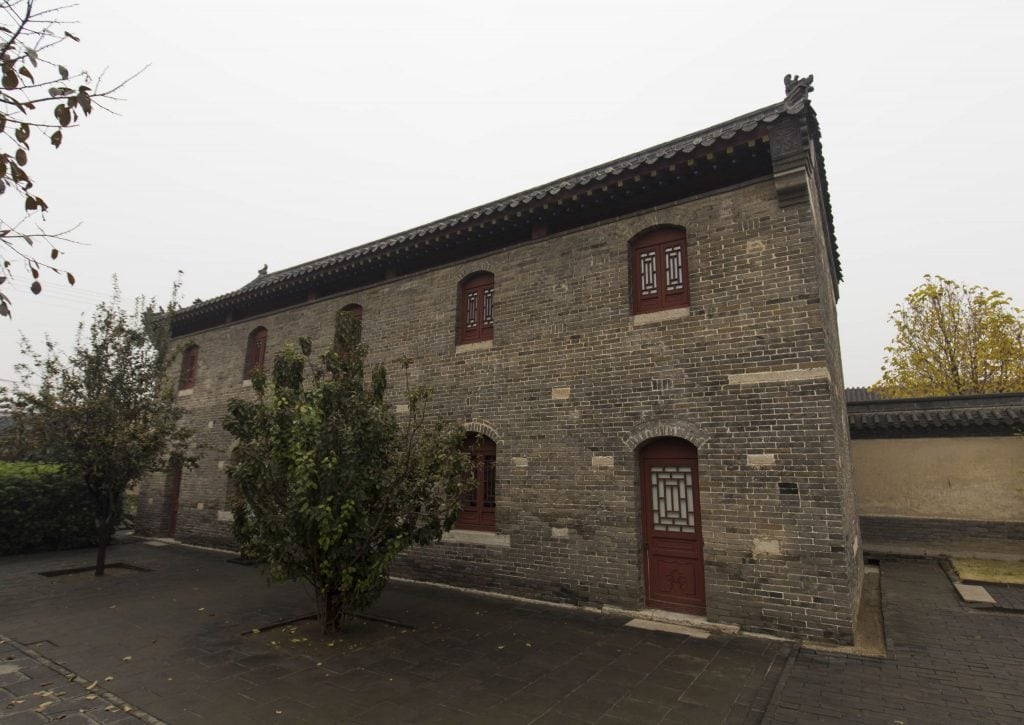
The birthplace of the Yellow Emperor
Not far from the historical center of Qufu you can visit the birthplace of the Yellow Emperor. He is one of the legendary cultural heroes of China said to live about 2500 BC. As there is no written heritage from that period these figures are partly fictitious and partly based on stories written centuries later. It is also said that texts were rewritten later for certain political reasons. Whether his origin is mythical or real the Yellow Emperor is believed to be the ancestor of all Chinese people. The Mausoleum of the Yellow Emperor can be found in Yan’an City in Shaanxi province but the birth place is in current Qufu, Shandong province. At the birthplace and where he and his clan used to live a monument in the form of a pyramid was built in the Song dynasty. This pyramid was renovated during the centuries and in the last renovation it was slapped with white tiles. At the top there is a jade statue of the Yellow Emperor. The pyramid is small but as one of a kind it’s a beautiful sight. In the 11th century a huge complex was built around the pyramid with shrines, government buildings and more but just the two large turtle-borne steles remain today with a lake in between. Standing next to the steles I felt small and imagined how important the Yellow Emperor must have been to deserve such a monument. It’s a nice area for a stroll but I would have preferred some sunshine instead of the continues drizzle the day I visited.
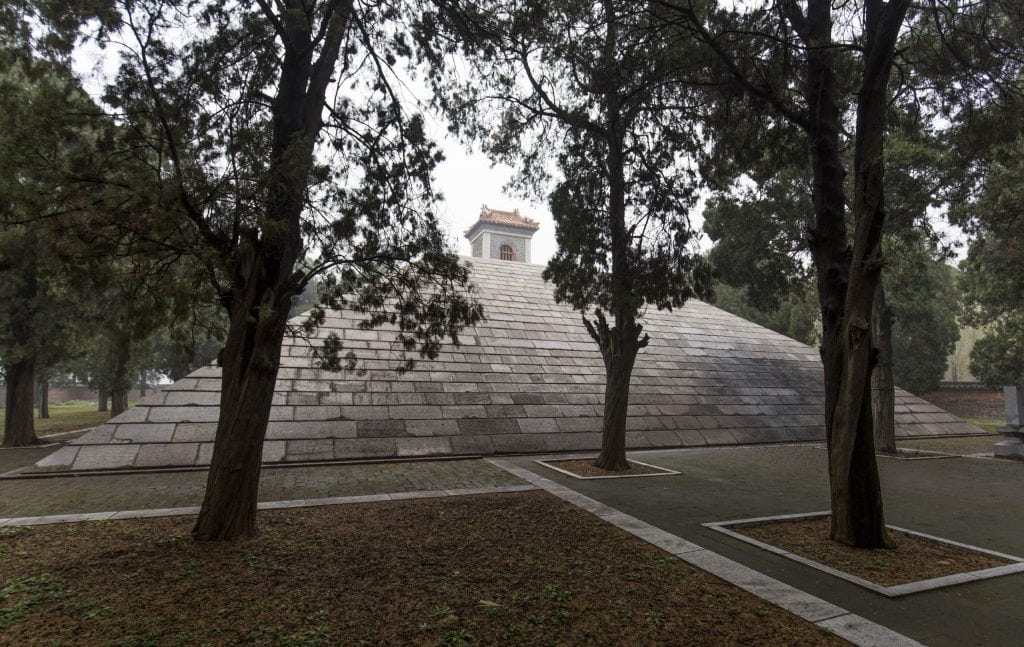
Shaohao tomb
Just behind the Yellow Emperors pyramid you will find the tomb of his son Shaohao. The historical scripts on Shaohao are even vaguer as those of the Yellow Emperor. He is claimed to be one of the Five Emperors but there are also texts that he is the son of a goddess and the planet Venus. Whatever is true he did play an important role in Chinese history. He was the emperor of Dongyi a group that lived in Eastern China. Shaohao moved the capital to current Qufu. He died at the hill where now his tomb is. The buildings around the tomb were built later in the Ming dynasty and include a sacrifice hall with two buildings on each side as wings. To see the area you do not need much time. I spend just 30-40 minutes there including the Yellow Emperors pyramid and steles but I did hurry due to the drizzle. It’s worth a visit due to its importance to Chinese history.
TIP! Do not confuse the pyramid as the tomb as it is not, the small hill behind the pyramid is the tomb of Shaohao.
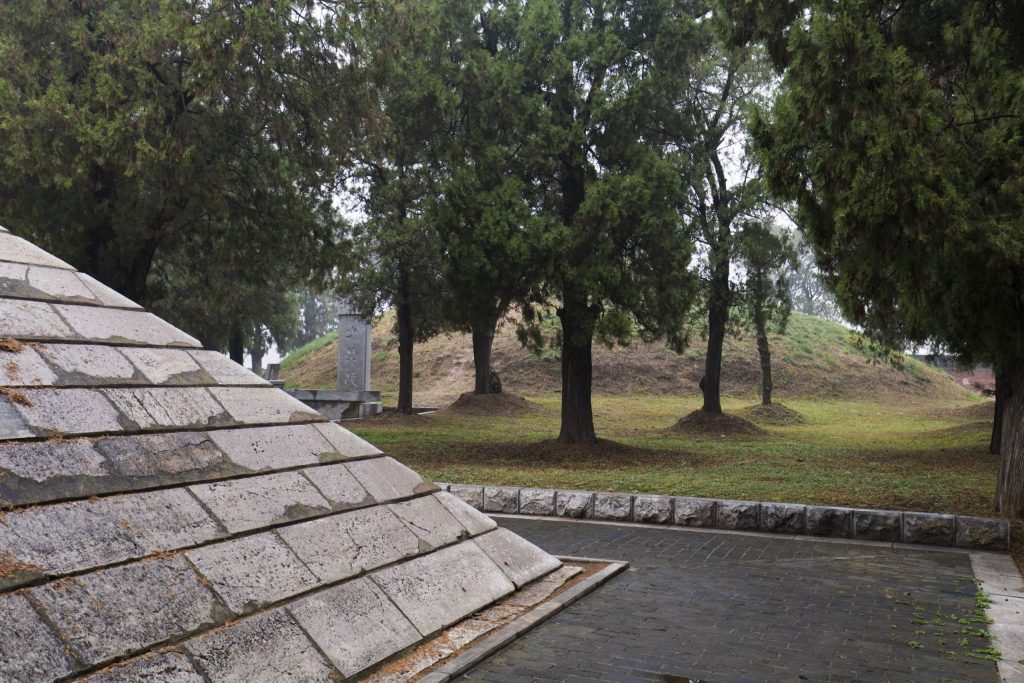
Are these places worth a visit for a first timer in China? I would say no unless you visit only places between Shanghai and Beijing. Even for a second time it might be not interesting enough yet. If you are into Chinese history, UNESCO World Heritage Sites and want to know more about it then I can recommend visiting these places for sure! The history at these sites date back thousands of years and every detail is beyond the scope of this article. I recommend further reading on Confucianism and the Yellow Emperor if you like to know more. I enjoyed my day trip a lot although it was drizzling all day long. Due to the drizzle I hurried to see everything and made it back to the hotel in Xuzhou around 18:00 to catch a dinner and go to bed early. After Jinan city and the day trip to Taishan I had one day left to explore Xuzhou the next day. These places I cover in another articles as they deserve a day trip by themselves.
Stay tuned for more stories and subscribe to the newsletter or follow CTB on social media (Facebook, Twitter, Instagram including Instagram stories; on all social media you can find CTB @christravelblog) to get updated information.
Did you visit Qufu too or do you have questions? Please leave a comment at the bottom of the page. Love to hear from you!


